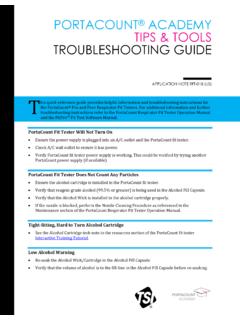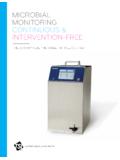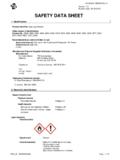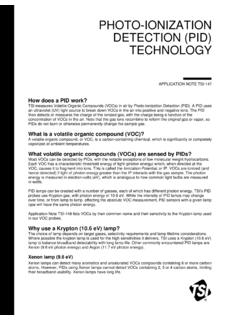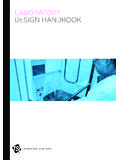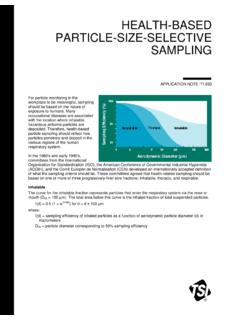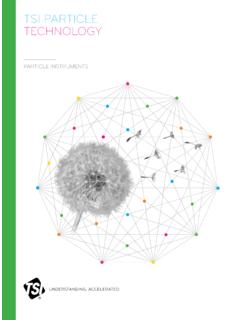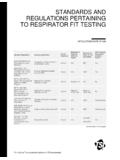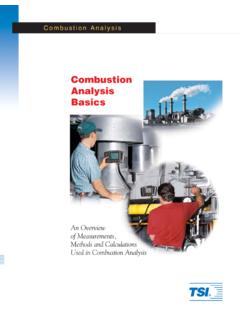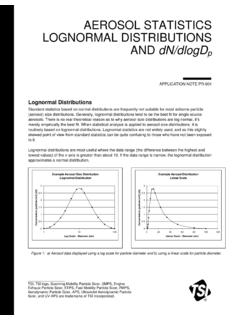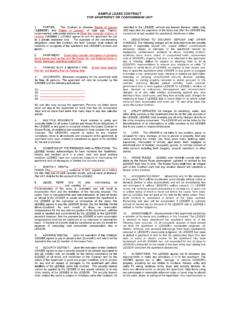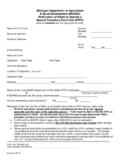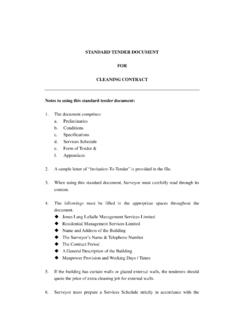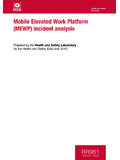Transcription of Percent Outdoor Air (%OA) Calculation and Its Use ...
1 Percent Outdoor AIR (%OA) Calculation and its USE APPLICATION NOTE TI-138 TSI s IAQ-CALCTM Indoor Air Quality Meter and TH-CALCTM Thermohygrometer calculate Percent Outdoor Air (%OA). In order to take advantage of this feature, it is important to first understand what % Outdoor Air is, why it is important, and how to use these instruments to calculate %OA. In the 1970s, energy consumption was a serious concern and every step was taken to reduce energy use and energy costs. Economizers became popular during this time because they re-circulated valuable conditioned air in the summer and the winter when heating or cooling costs were high.
2 While this was going on, building designers were designing new buildings to be more efficient by sealing windows and doors better and by sealing other leaky spots. This reduced the amount of infiltration, which is how the majority of Outdoor air entered these buildings. This appeared to make the buildings more efficient because heating and cooling costs were reduced. However, it wasn t until years after these changes were made that the HVAC industry began to notice a trend in these airtight buildings with economizers. Occupants complained of headaches and nauseous feelings.
3 Shutting off the Outdoor air intake and sealing the building resulted in an insufficient amount of Outdoor air to dilute indoor contamination. This led to Sick Building Syndrome and other Indoor Air Quality complaints. Perhaps the somewhat infamous quote, The Solution to Pollution is Dilution, may sum up the whole idea behind the importance of fresh Outdoor air. We may not go as far as to say that indoor environments have pollution, but we might want to consider the effects of the indoor air components that can t be filtered out. These include CO2, body odors, chemicals from photocopiers and cleaners, and so on.
4 Most of these components alone wouldn t make someone sick over short periods of time. However, after long periods of exposure, like in a workplace where 40-hour workweeks are typical, these components have the capacity to make occupants tired, nauseous, and otherwise not as healthy. Eventually, these air components can wear down a person s immune system and can eventually make occupants sick. The best way to minimize these bad air components is to dilute them with adequate fresh air. This will probably never completely remove the contaminants, but rather, it will keep the components at a level low enough as not to affect occupants.
5 These days economizers still exist, but they have evolved to recirculate as much conditioned air as possible and still deliver at least the minimum amount of fresh Outdoor air recommended by ASHRAE. -2- ASHRAE, the American Society of Heating, Refrigerating and Air-Conditioning Engineers, Inc., has a standard called ASHRAE 62 Ventilation for Acceptable Indoor Air Quality. This standard recommends a minimum amount of fresh air per person for defined spaces. For example, the minimum amount of fresh Outdoor air recommended for office spaces is 20 CFM/person.
6 One method used to calculate the volume of fresh Outdoor air entering a system is to take a duct traverse of the Outdoor air duct intake. However, this is not always feasible, because there may not be sufficient straight ducting to do a good duct traverse1 of either the return air or the Outdoor air. Often, there is not even a duct for Outdoor air, so it is essentially impossible to determine the volume of Outdoor air that is entering the system. For an alternative way to determine how much fresh Outdoor air is entering a space, use the following equation: Volume Fresh Outdoor Air =Volume of delivered air x % Outdoor Air of delivered air The volume of fresh Outdoor air entering a space equals the volume of delivered air (ft3/min, m3/hr, m3/min or L/s) times the % Outdoor air.
7 Let s look at each of these items separately. The total volume of delivered air is the total volume of both Outdoor air and return air entering a space. To determine the total volume of supply air entering a building, do a duct traverse using a VELOCICALC Plus Rotating Vane Anemometer or a DP-CALCTM Micromanometer right after the Air Handling Unit and before the duct branches off. Another method to determine the total volume of delivered air is to use the ACCUBALANCE Air Capture Hood at each supply diffuser and to take the sum of the readings. Percent Outdoor air is the % of the total volume of delivered air that is Outdoor air.
8 There is more than one way to measure %OA. One method is to use a tracer gas like SF6. This gas would be used to saturate the system at a set concentration and to record how the concentration decreases over time. Using this information, one can figure out what the %OA is. This can also be done with CO2 if the concentration is high enough and there are no occupants. Perhaps a better option is to take three readings of CO2 concentration and plug them into an equation. The three reading locations include Outdoor air, supply air, and return air. Another option is to take temperature readings at those same three locations and use a similar equation.
9 This Application Note describes these last two methods of determining %OA. To calculate the %OA, use the following equation for CO2 or temperature: %100)()(%xXXXXOAORSR Where: XR = Return air CO2 concentration OR temperature XS = Supply air CO2 concentration OR temperature XO = Outdoor air CO2 concentration OR temperature As of December, 2000, ASHRAE s recommendation for minimum amount of fresh Outdoor air for office spaces is 20 CFM/person. These recommendations may change over time and are different for different defined spaces including smoking areas, restrooms, and many more.
10 Please refer to the most current ASHRAE 62 guideline for minimum Outdoor air recommendations for your specific Application. -3- Let s look at an example. An industrial hygienist takes three samples with the following values: Outdoor air CO2 level = XO = 400 ppm Supply air CO2 level = XS = 645 ppm Return air CO2 level = XR = 823 ppm Then %100)()(%xXXXXOAORSR %100)400823()645823(x % )423()178( x And we can try this equation out using temperature measurements, too. Let s say that these measurements are taken in cold climates in the winter: Outdoor air temperature = XO = 35 F Supply air temperature (before conditioning) = XS = 55 F Return air temperature = XR = 70 F Then %100)()(%xXXXXOAORSR % )3570()5570( xx And we can try out the equation using summer temperature measurements as well.
